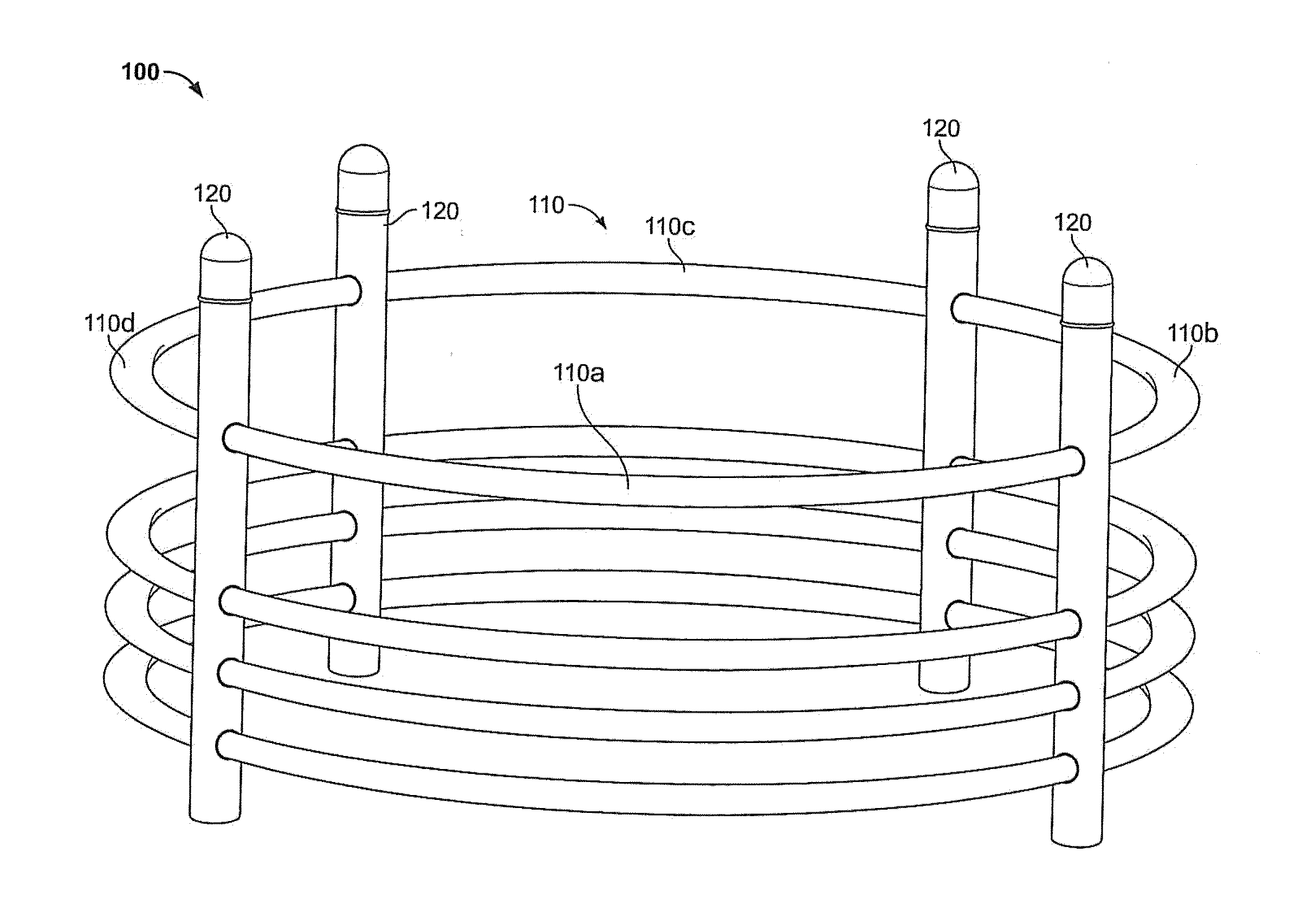Portable animal feeding device
- Summary
- Abstract
- Description
- Claims
- Application Information
AI Technical Summary
Benefits of technology
Problems solved by technology
Method used
Image
Examples
Embodiment Construction
[0014]The production of hay in large round roll-type bales involves feeding of the hay to farm animals in feed lots. Typically, the bale will be moved by a tractor to the feeding station. The usual practice is to allow the animals to gather round the bale and eat from it without restriction. This practice results in fifty percent or more waste by the hay being trampled into the ground.
[0015]The portable animal feeding device of the present invention provides for the restriction of animals via head openings in the circular structure from trampling hay placed within the device. As a bale or the loose hay placed within the device is finished, the structure may be easily disassembled or rolled to a new feeding location and refilled.
[0016]The portable feeding device may be filled in several different ways. For example, the feeding device may be tipped over onto a bale of hay. The feeding device may be loaded with a bale or loose have from the top. The feeding device may also be filled fr...
PUM
 Login to View More
Login to View More Abstract
Description
Claims
Application Information
 Login to View More
Login to View More - R&D
- Intellectual Property
- Life Sciences
- Materials
- Tech Scout
- Unparalleled Data Quality
- Higher Quality Content
- 60% Fewer Hallucinations
Browse by: Latest US Patents, China's latest patents, Technical Efficacy Thesaurus, Application Domain, Technology Topic, Popular Technical Reports.
© 2025 PatSnap. All rights reserved.Legal|Privacy policy|Modern Slavery Act Transparency Statement|Sitemap|About US| Contact US: help@patsnap.com


